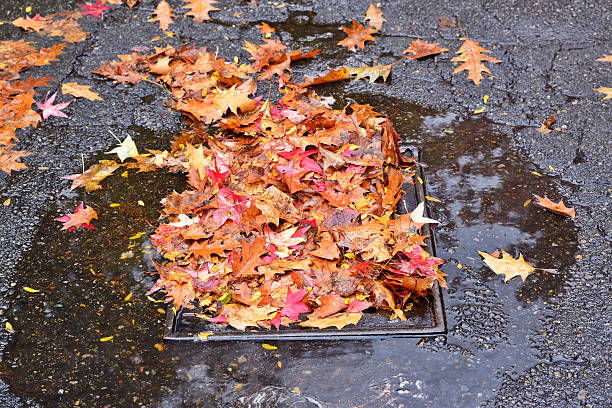PREVENTING SEWER BACKUPS FROM BUILDING SEWER
- Landscape with care. When you plant trees or shrubs on your property, consider the location of your building sewer. Do not plant above or near the building sewer. Roots that are seeking water can enter the building sewer and cause clogs, or possibly break the sewer pipe. If roots enter the pipe, you will need a professional plumber to cut away the roots and clear the pipe .Be sure to do this each year, because roots can grow back quickly.
- Prevent grease buildup. Avoid putting cooking fats, oil, and grease (FOG) down the drain or toilet. FOG likes to congeal in pipes and restrict or block flow. It also likes to mix with wet wipes and other debris in the sewers to cause “fatbergs,” which are congealed solid masses that can cause major pipe damage and sewer backups.
- Flush responsibly. Do not flush non-dissolving materials in your toilet, such as baby wipes, diapers, feminine products, or kitty litter. These materials can get caught in your building sewer and restrict or block the flow of wastewater through your system. Dispose of these items in the trash. Some brands of wipes say they are safe to flush, but MSD does not recommend it.
- Clean your gutters frequently. In many parts of Cincinnati and surrounding communities, the downspouts from gutters are tied directly into the building sewer. Leaves and twigs that fall onto a roof can be washed into the downspouts, and eventually move into the building sewer. A buildup of this debris in the building sewer can create clogs that can cause wastewater to back up into your home. To help keep leaves and twigs out of your building sewer, be sure to keep your gutters clean.
- Consider private building sewer insurance. Insurance to help offset the cost of repairing private building sewers is available through insurance companies and some municipalities.

- Inspect your building sewer annually to keep it in good working order. Have your line inspected and cleaned by a professional plumber. Be sure the plumber you select has equipment that is the proper size to clean the full interior of your building sewer. In our area, building sewers are typically 4 to 6 inches in diameter.
- Install a backup prevention device. Talk to a plumber about installing a sewer backflow valve in your drain line. A backflow valve can help prevent the risk of sewage backing up into your home. If you have experienced multiple sewer backups caused by inadequate capacity in the MSD public sewer, please visit our Sewer Backup (SBU) Prevention Program page for more information. You may be eligible for a backup prevention device free of charge.
PREVENTING WATER INTRUSION
- Clean your gutters. Remove leaves and debris that can clog gutters and drains, causing rainwater to spill over onto your property and find its way into your basement or lower level through cracks in your foundation, windows, and doors.
- Install new foundation drains.
- Waterproof your basement.
- Buy a sump pump. Consider installing a sump pump with a battery backup. The sump pump will gather water runoff and pump it to the exterior of the your home, away from your foundation.
- Change the slope of your yard away from your house.
- Keep stormwater inlets on your property or along your street free and clear of debris. Call your local municipality to report clogged street inlets or street flooding.

PROTECTING YOUR BELONGINGS
- Obtain flood insurance and/or a sewer backup rider on your insurance policy. Review your coverage annually.
- Elevate, elevate, elevate. Elevate important possessions or store them somewhere other than the basement. Elevate water heaters, furnaces, washers and dryers and anchor them if needed.
- Keep pets out of your basement.If your basement frequently floods, please keep pets safe and out of the area.
- Photograph and document items in your basement.
